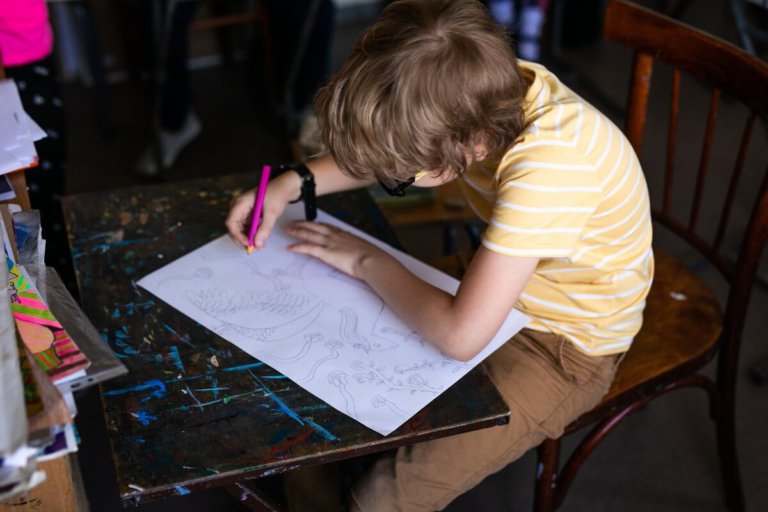
Today’s youth are digital natives who have never experienced a world without the internet.
Social media platforms are widely used platforms among teenagers while “smartphone ownership has become a nearly ubiquitous element of teen life,” according to the Pew Research Centre.
Social media is rife with highly edited images of people that can make anyone feel worse about their body, warranting concern over the way students’ might view themselves after spending hours online each week.
One way that’s been suggested to counter this through education is via the use of nude models in art classes.
Promoting body positivity

Are advocates of nudity in art classes pushing it too far? Source: Shutterstock
According to The Telegraph, campaigners have called for nude art classes in schools to improve body image issues exacerbated by social media. They tout the display of the no-filter version of the human body as a way to counter how young people are perceiving shape, size and normality online.
Life drawing advocates say sketching nude people should be part of a balanced curriculum, adding that primary school students are more open to nudity than adults made prudish by taboos, or judgmental by presumptions about what a body should be.
The report added that the Department for Education (DfE) would not stop schools exposing students to nude models in art classes, leaving it to the judgment of teachers.
The Telegraph notes there are no explicit Government guidelines on this.
Advocate Anne Noble-Partridge, who runs art classes in the capital with London Drawing, was quoted saying: “You are accepting of whatever you are looking at, whether they are old, or overweight, or hairy.
“You introduce young people and children who haven’t’ got these ingrained prejudices, ideas of disgust, or appropriateness. When somebody takes their clothes off they are just human beings. It really gets rid of any prejudices as to what a body should look like. It’s great for body positivity.”
She added: “In my experience, primary school children are a great audience for this kind of thing.”
Her views were echoed by another artist, Esther Bunting, of life drawing group Spirited Bodies, who hopes for universal life drawing in schools. She believes such lessons can counteract low confidence created by idealised images seen on Instagram.
“It’s very healthy, I think, and it’s an antidote to all that, particularly now. It’s been exacerbated by the use of social media. From a very young age they are seeing all kinds of stuff,” said Bunting.
Commenting on introducing life drawing to schools, she said: “You can’t really start too young, because they are already being exposed.”
The National Association of Head Teachers (NAHT) said schools are “best placed” to decide whether or not to introduce the naked human form it its art classes.
The union’s senior policy advisor Sarah Hannafin told The Telegraph: “Schools will have policies in place which would apply to any visitors to ensure pupils are safeguarded.
“Schools should have the freedom to determine the right curriculum to engage, inspire and motivate all pupils. Schools know their pupils best and so can consider their needs, age and stage of development when making these curriculum decisions.”
Liked this? Then you’ll love…
Hong Kong is running out of space for international schools
Will the 2020s see more facial recognition software used in schools?







